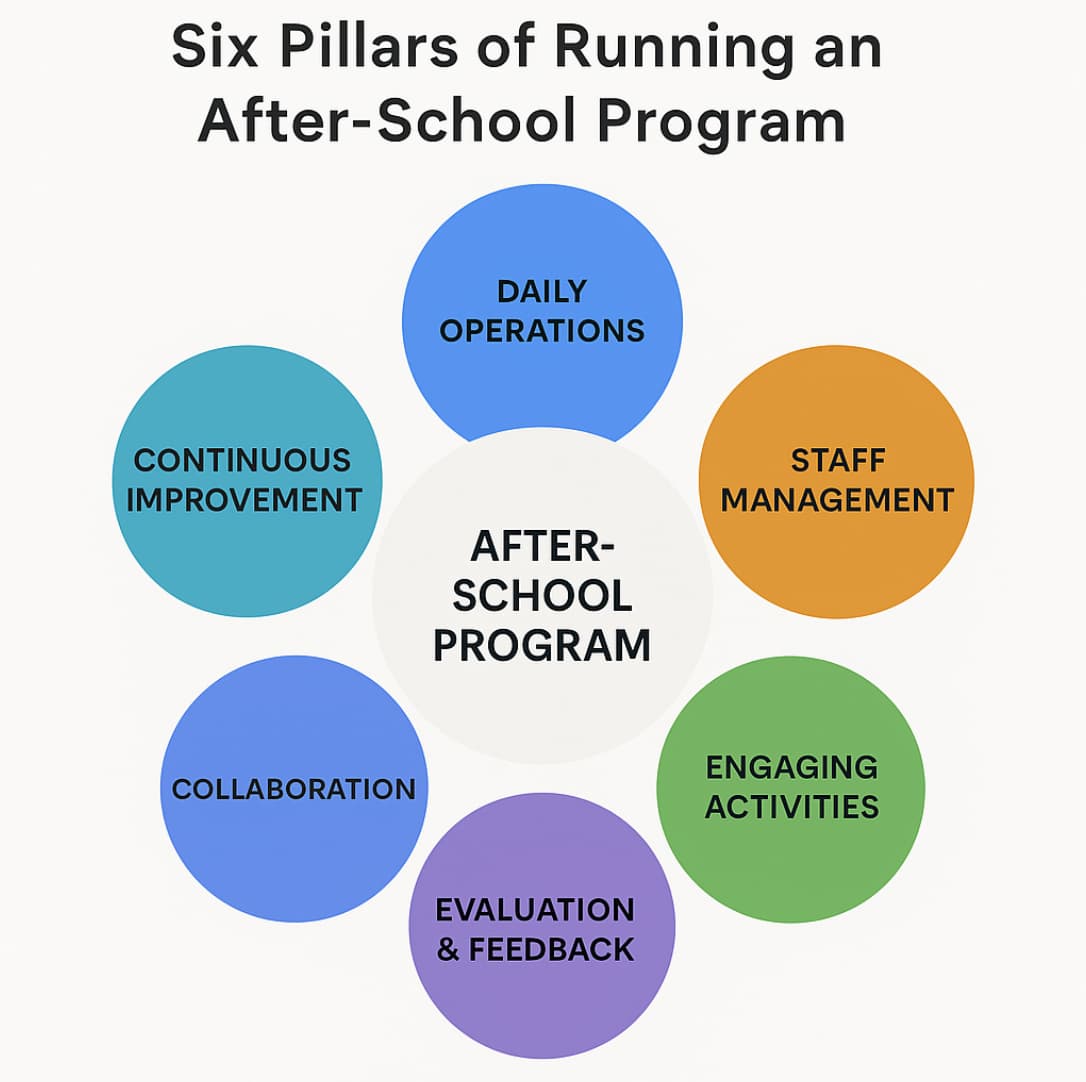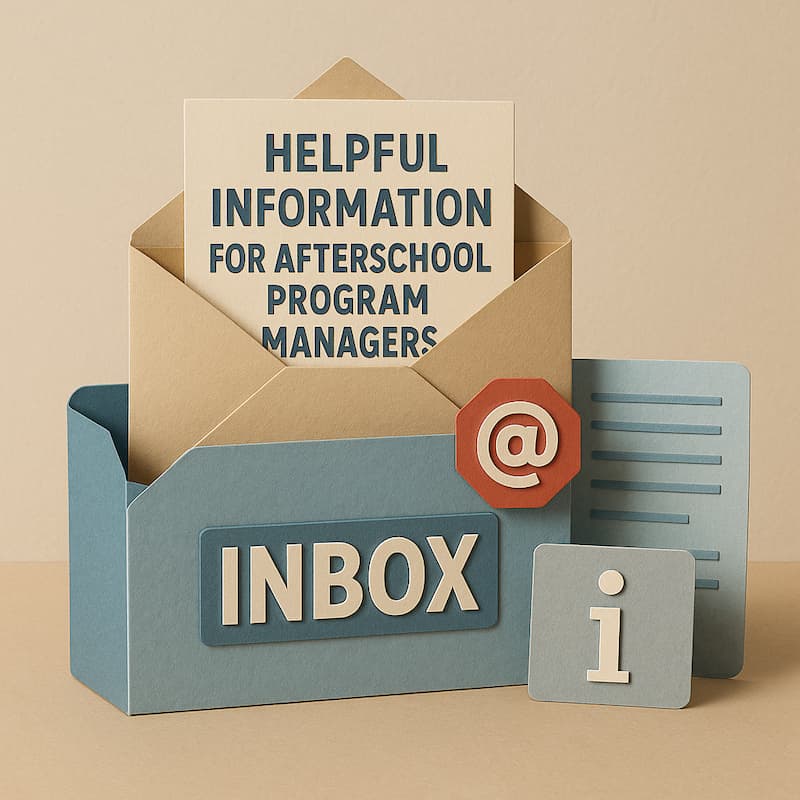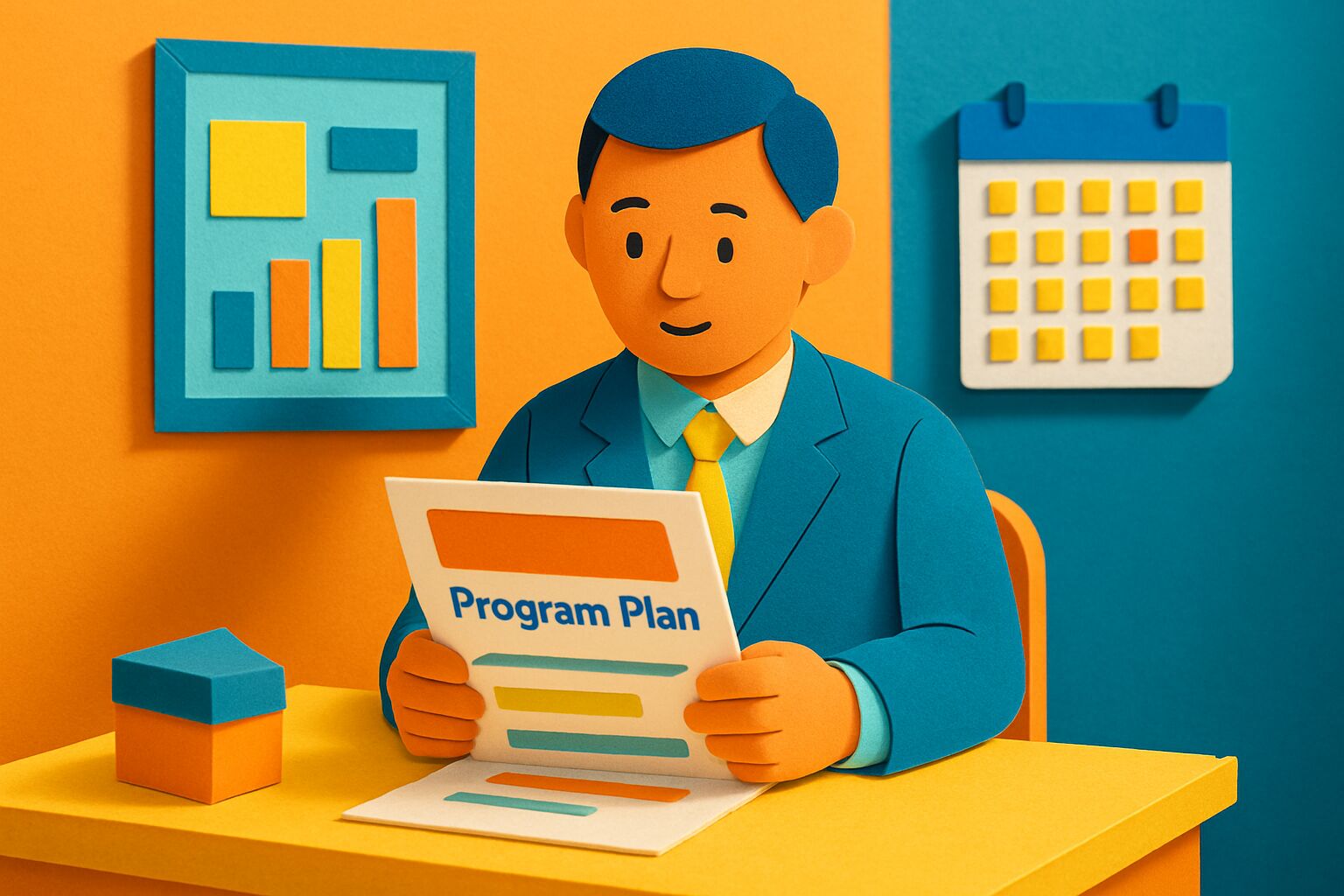How to Run an After School Program?
Running a successful after-school program balances engagement, logistics, and safety. But doing that well requires the kind of insights that come from experience. For example, the riskiest moments aren’t during activities, they’re during transitions like snack time and dismissal, where extra staffing and tight routines prevent chaos. Or learning that hour-long blocks need to be broken into shorter phases, since kids struggle to stay focused for 60 straight minutes. The best programs don’t wait for an annual review. They run small, continuous experiments, making real-time adjustments to create programs that kids choose to attend rather than have to attend.
Table of Contents
- What does daily management look like in an after-school program?
- How do you hire and retain quality staff for an after-school program?
- What kinds of activities keep students engaged long-term?
- How should after-school programs measure success?
- What role do parents, teachers, and community partners play?
- How do after-school programs improve year after year?
- Conclusion / TL;DR
What does daily management look like in an after-school program?
Strong daily operations are the backbone of any after-school program. Students feel secure when routines are predictable: arrival, snack, activities, outdoor play, and dismissal should follow a consistent rhythm. This structure not only reduces anxiety but also minimizes behavioral issues.
Safety protocols are essential. Sign-in/sign-out systems ensure children are always accounted for, and only authorized adults can pick them up. Staff should use tools like attendance apps or ID checks to maintain parent trust. Adequate staff-to-student ratios (typically 1:10–15 for elementary students) prevent burnout and support meaningful interactions.
Equally important is preparation. Activities should be planned with age-appropriate pacing and materials organized in advance. When staff are ready, children stay engaged instead of restless. A smooth daily flow—backed by strong supervision and organized logistics—creates the reliable foundation students and families depend on.
📖 Learn more about starting an afterschool program with strong foundations.

How do you hire and retain quality staff for an after-school program?
After-school programs succeed or fail on the strength of their staff. Hiring should prioritize not only experience and qualifications but also alignment with the program’s mission and culture. A thoughtful onboarding process introduces new staff to expectations and values, setting the tone for long-term retention.
Training should go beyond CPR or first aid certifications. Ongoing professional development in areas like child development, positive behavior management, and activity planning keeps staff skilled and confident. Informal coaching—through observation, mentoring, and feedback—helps new staff grow while strengthening team cohesion.
Retention requires recognition and supportive work culture. Staff who feel appreciated and included in decision-making are more likely to stay. While budgets may limit pay increases, programs can offer perks such as flexible scheduling, professional development stipends, or opportunities to take on leadership roles. Consistency in staffing reduces turnover and builds the trusting adult-child relationships that families value most.
📖 Explore tips for staffing afterschool programs.
What kinds of activities keep students engaged long-term?
An effective program offers more than homework help—it should feel like a place of discovery and fun. Elementary-age children benefit from variety: one day might feature an art project, another a science experiment, followed by sports, cooking, or cultural activities.
Activities should be developmentally appropriate. Younger students need shorter segments and clear instructions, while older students can handle multi-step projects. A mix of energetic outdoor play and quiet time (like reading or crafts) respects children’s needs for both movement and focus. Hands-on learning—gardening, cooking, building, or performing—keeps them engaged and builds skills across domains.
Offering choice is another key to sustained interest. Simple options like “art or board games” empower children to feel ownership in their experience. Programs that invite student feedback and adapt offerings over time avoid stagnation and keep kids excited to attend.
📖 See examples of afterschool enrichment activities.
How should after-school programs measure success?
Evaluation is not a once-a-year task but an ongoing cycle. Observations help leaders understand how students are engaging in real time, while surveys of parents and children provide insight into satisfaction and unmet needs. Quantitative data such as attendance, retention, and incident reports highlight broader patterns.
Some programs adopt structured tools like the Youth Program Quality Assessment (PQA) or state-level afterschool standards to benchmark performance. Others use quick “pulse checks,” like short surveys or informal staff feedback, to stay agile. The most effective evaluations mix multiple perspectives: staff, students, parents, and external observers.
Sharing results openly with stakeholders—celebrating wins while acknowledging areas for improvement—builds trust and demonstrates accountability.
📖 Learn how to evaluate an afterschool program effectively.
What role do parents, teachers, and community partners play?
An after-school program thrives when it integrates into the larger ecosystem of school and community. Parents want to feel informed and reassured. Newsletters, texts, and quick chats at pickup build trust, while family events showcase student achievements and strengthen relationships.
Teachers provide valuable insight into students’ needs and progress. Regular communication between classroom and after-school staff helps align support, whether that means understanding homework assignments or recognizing social challenges. Community partnerships bring in fresh resources—local businesses might donate supplies, while organizations can provide guest instructors or field trip opportunities.
By establishing advisory committees or regular check-ins, administrators create structured feedback loops with parents, teachers, and partners. When all stakeholders feel invested, the program becomes a beloved extension of the school community.
📖 Read more about building strong afterschool partnerships.
How do after-school programs improve year after year?
The most sustainable programs treat improvement as a continuous cycle rather than a one-time project. Using frameworks like Plan–Do–Study–Act, administrators test new ideas, collect feedback, and refine practices.
For example, if student surveys reveal that Friday activities feel repetitive, leaders can experiment with a new club, observe the results, and adjust accordingly. Documenting changes and celebrating progress—such as higher parent satisfaction or reduced behavior issues—keeps morale high and shows that feedback drives real improvements.
A culture of continuous improvement depends on transparency. Sharing updates like “We added a cooking club based on your feedback” closes the loop with families and students, building trust and engagement. Programs that embrace this mindset remain dynamic, relevant, and resilient over time.
📖 Explore continuous improvement strategies for afterschool programs.
Conclusion / TL;DR
Running an after-school program isn’t about keeping the lights on after dismissal—it’s about creating a safe, enriching, and responsive environment where children can grow.
- Daily operations provide structure and safety.
- Strong staff teams deliver consistency and care.
- Engaging activities spark curiosity and joy.
- Evaluation and feedback ensure quality.
- Collaboration with parents, teachers, and community enriches the program.
- Continuous improvement keeps the program thriving year after year.
👉 For a deeper dive, download Attendly’s free resource: The Missing Manual for California Afterschool Programs.







